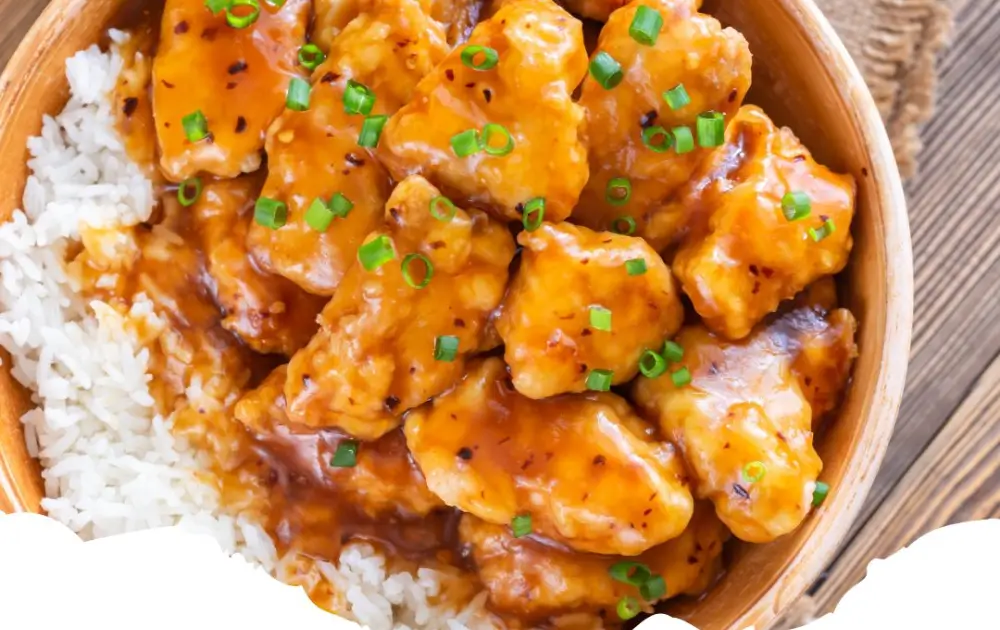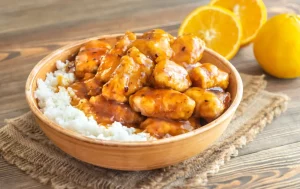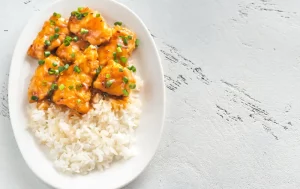Orange Chicken is a popular dish that combines crispy, fried chicken pieces with a sweet and tangy orange sauce. Originating from Chinese American cuisine, this dish has won the hearts of many with its vibrant flavors and satisfying crunch. Perfect for those who love a blend of citrus and savory notes, Orange Chicken is a staple in many restaurants and households alike.
Selecting the Right Chicken
For the best Orange Chicken, choosing the right cut of chicken is crucial. Boneless, skinless chicken thighs are often preferred for their juiciness and flavor, but chicken breast can also be used for a leaner option. Cutting the chicken into bite-sized pieces ensures they cook evenly and are easy to eat.
Preparing the Chicken
The key to achieving the perfect texture for Orange Chicken lies in the batter and frying technique. The chicken pieces are coated in a mixture of flour, cornstarch, and seasonings, then deep-fried until golden and crispy. This process not only seals in the juices but also prepares the surface for the sauce to cling to.
Crafting the Orange Sauce
The orange sauce is what sets this dish apart, with its perfect balance of sweetness, tanginess, and depth. Fresh orange juice, zest, soy sauce, vinegar, sugar, and garlic form the base of the sauce. A slurry of cornstarch and water is often added to thicken the sauce, allowing it to coat the chicken pieces beautifully.
Combining Chicken and Sauce
Once the chicken is fried and the sauce is simmered to the right consistency, the two are combined, coating each piece of chicken in the glossy, flavorful sauce. It’s important to toss the chicken in the sauce just before serving to maintain its crispiness.
Serving Suggestions
Orange Chicken is traditionally served over a bed of steamed rice, making for a comforting and filling meal. Garnishing with sesame seeds and sliced green onions adds a touch of color and texture. For a healthier twist, serve with steamed vegetables or a side salad to balance the richness of the dish.
Customizing Your Orange Chicken
Orange Chicken is a versatile dish that can be customized to suit different tastes. Adjust the sweetness or tanginess of the sauce according to preference, or add a kick of heat with red pepper flakes or chili oil. Experimenting with additional ingredients like ginger or bell peppers can also introduce new layers of flavor.
Mastering the Balance of Flavors
Mastering the balance of flavors in Orange Chicken is essential for creating a dish that stands out. The secret lies in finding the right ratio of orange juice to soy sauce and vinegar, ensuring that no single flavor overpowers the others. Adding a hint of ginger or a dash of sesame oil can introduce an extra layer of complexity, elevating the overall taste. Taste testing and adjusting the sauce as you cook is crucial for achieving that perfect harmony of sweet, tangy, and savory.
The Importance of Fresh Ingredients
Using fresh ingredients plays a significant role in the quality of the final dish. Freshly squeezed orange juice and zest bring a brightness and depth of flavor that bottled juice simply can’t match. Similarly, selecting high-quality chicken and fresh garlic will enhance the dish’s flavor profile, making the extra effort well worth it. Fresh ingredients not only contribute to a more vibrant taste but also add to the nutritional value of the meal.
Creative Serving Ideas
Orange Chicken doesn’t have to be limited to being served over rice. For a creative twist, try serving it in lettuce wraps for a lighter, low-carb option. Alternatively, topping a fresh green salad with warm Orange Chicken can create a satisfying, nutritious meal. For those looking for a heartier option, serving Orange Chicken alongside noodles tossed in a light sesame dressing can offer a delightful textural contrast.
Engaging in Culinary Experimentation
Engaging in culinary experimentation with Orange Chicken encourages cooks to explore their creativity. Whether it’s by adding unconventional spices, experimenting with different citrus fruits, or incorporating the chicken into entirely new dishes, there’s plenty of room for innovation. This experimentation not only keeps the cooking process exciting but also leads to the discovery of new favorite recipes.
Sharing the Love for Orange Chicken
Sharing the love for Orange Chicken through cooking and dining together fosters connections and creates lasting memories. Whether it’s a family dinner, a gathering of friends, or a special occasion, Orange Chicken has the power to bring people together over a shared appreciation for good food. Encouraging others to try making the dish at home or experimenting with their own versions can spread the joy and satisfaction that comes from cooking and enjoying this beloved dish.






